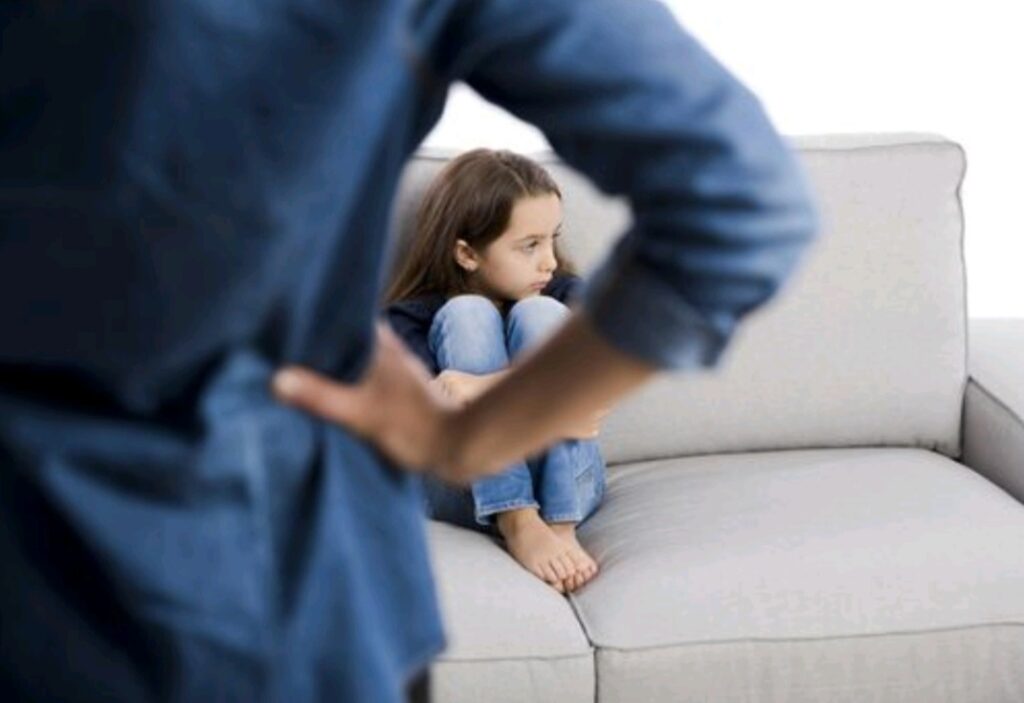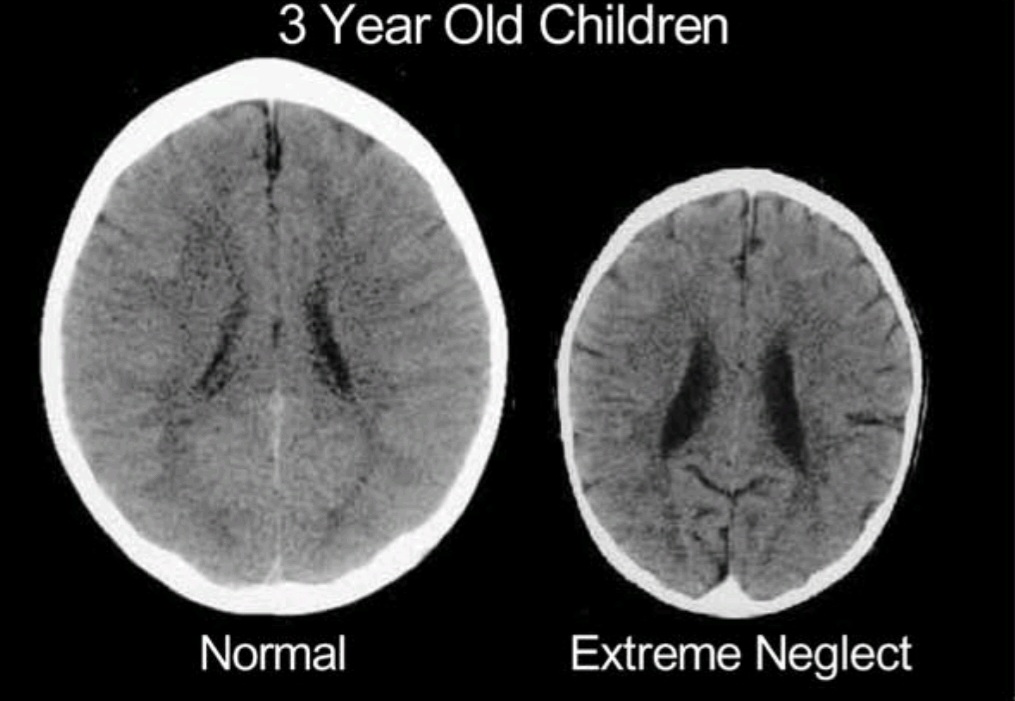Many researches have been conducted and still work is going on around the world to understand the root cause and the aftereffect of child abuse and neglect in-depth. Since, this matter looks like never ending so massive amounts of studies conducted is still considered insufficient. Globally many researchers are exploring the impact of child maltreatment on various domains, such as, communication, learning, interpersonal relationships, self-esteem or self-worth, physical health, psychological health, etc. So, this essay will discuss a few of the researches on different domains to develop further importance of understanding and planning and implementing strategies accordingly to reduce this growing calamity.
Impact of Child Maltreatment on Interpersonal Relationships
The traumatic events (i.e. abuse and neglect in childhood) experienced by children can leave long-term issues like influencing a child’s understanding and perception of oneself and the world (i.e. people) around them. Many children show the consequences of maltreatment as dysfunctions in building interpersonal relationships which might be due to attachment problems during their developmental period. Hence, secure and positive attachments are an important source of constructing healthy interactions with oneself, others and helps to improve resilience. Interpersonal relationships and attachments act as a building block of life experiences, development of emotions, sense of world, beliefs, etc. During early childhood, these attachments do not develop automatically, but it requires nurturing and loving environment, stability between various relationships, and fulfillment of physical and emotional needs. However, when a child experiences maltreatment then the ability to build secure attachments is at risk leading to disruptions in attachments and they can be observed in their adulthood. Also, if the perpetrator is parents, caregivers or guardians then it causes more serious complications. Continuation of this problem for a long period of time completely destroys children’s ability to interact with others in a healthy manner regardless of the type of abuse inflicted. Moreover, according to research findings, children encountered neglect, sexual and emotional abuse as compared to physical abuse is more prone to interpersonal distress.

A study conducted by Davis, J. L., Petretic-Jackson, P. A. and Ting, L. (2001) aimed to explore the relationship between symptomatology, interpersonal relationships and abuse during childhood. For this purpose, 315 women from university were included. The participants who experienced childhood abuse had poor quality of interpersonal relationships previously; they feared intimacy and had more symptomatology of trauma as compared to women who did not experience childhood abuse. The findings suggested that the predictors of feared intimacy involved physical, emotional and sexual abuse; dissociation, avoidance, etc. However, depression, dysfunctions in the sexual behaviors and self-reference were predictors of assessing quality of contemporary interpersonal relationships while various childhood abuses along with sexual abuse and anger acted as predictors of quality of earlier interpersonal relationships.
Another research conducted in 2004 by Colman, R. A. and Widom, C. S. worked on a prior study related to children maltreatment and their social functioning. The purpose of the study was to explore the effect of childhood maltreatment including physical and sexual abuse and neglect on the extent of involvement with adults in intimate relationships and on their functioning. The data included 1,196 participants who were abused and neglected (N=676) and who were not (N=520) between the years 1989 and 1995. A 2 hour face to face interview was taken along with various rating scales and administration of psychiatric assessment. The results suggested that childhood abuse causes males and females to divorce their partners and walk out at a higher rate as compared to a control group. Additionally, females maltreated in childhood showed less probability of having positive perceptions about their partners and being sexually loyal. Therefore, both males and females abused and neglected may have problems in establishing and maintaining these healthy relationships later in life.
Impact of Child Maltreatment on Behavior
A behavior is an outward display of emotions, beliefs, stability and sense of security. Through a child’s behavior parents and professionals can investigate their development throughout the life. As all kinds of abuse are harmful to children and damage them emotionally, mentally and physically, similarly, they leave a deep-rooted effect leading to behavioral and developmental problems. Hence, childhood abuse and neglect may cause serious behavioral issues along with complications within psychological developmental domain, for example, personality disorders, depression, violent and aggressive behaviors towards others (can cause harm to others as well as oneself). Various kinds of behavior acts as a cue and can give ideas about probability of childhood maltreatment. Also, it can suggest that the child maltreatment is taking place or still it is carried out. This way physicians and other healthcare professionals can apply relevant interventions to reduce the effect of maltreatment. On the other hand, they can support the caregivers by making them understand why the child is behaving the way he/she is behaving and what alternative negative responses are likely to occur due to neglect and abuse. Although, behavioral problems do allow predicting the childhood maltreatment, but when the child is removed from home and placed into foster care homes/institutes, still behavioral issues persist.
Different researches have been done globally which targets the impact of child maltreatment on behaviors and specifically indicates what kind of disorders and issues can occur during the years. Similarly, Dutton, D. G. and Hart, S. D. aimed to study how the abuse and neglect causes maladaptive behaviors in adulthood. For this purpose, they reviewed files of 604 male inmates from different institutes to identify the impact of different childhood abuses and neglect on their behavior (aggressive and violent behavior) in their adulthood. The generated results showed that men abused in childhood were three times more probable to engage in violent and aggressive acts as adults compared to those who were not abused. Furthermore, depending on the type of abuse, male inmates engaged in specific types of violence. For instance, those with childhood physical abuse and sexual abuse engaged in physical violence and sexual violence, respectively. Moreover, it proves another hypothesis that victims of childhood maltreatment are more likely to maltreat others in their adulthood may be because of exposure to and learning of violent acts.
Another study discussed three forms of behavior including withdrawn, prosocial and aggressive behavior. These variables were observed in 21 children of physically abused and 26 children of non-abused and non-neglected participants (age range of 5 to 8 years). To measure it, assessments were administered including Kinetic Group Drawing, Human Figure Drawing (HFD), verbal stories taken from children and the Pittsburgh Adjustment Survey was filled by teachers. These assessments/scales helped to discriminate between the three forms of behaviors. It was found that children with physical abuse in childhood manifested significant aggressive behaviors compared to neglected and non-maltreated ones. Children neglected showed significant withdrawn behaviors compared to non-maltreated and physically abused ones. However, children without maltreatment displayed significant prosocial behaviors compared to neglected and abused children.
Impact of Child Maltreatment on Brain Development
There are many physical features of health that are affected by child abuse and neglect and later in life causes serious and prolong damage to the child. But, specifically this section will talk about that how child abuse and neglect impacts the brain development during early years of their life. As positive experiences in a child’s life positively enhance and develop a healthy brain, similarly negative experiences like maltreatment negatively influence the brain development. For instance, changes in the brain structure as well as the chemical activity are noted in such cases. In addition to it, child abuse impacts both cognition and brain development which may lead to difficulties in language and speech. Unfortunately, adults who experience such maltreatment of a high severity display damaged neural connections within the brain. A number of brain structures and chemical activities (i.e. neurotransmitters) are negatively affected, such as hippocampus, cerebellum, prefrontal cortex, corpus callosum, amygdala, cortisol levels, etc. Various researches are being put forward to analyze those changes that happen in a child’s brain with neglect and any form of abuse. On the contrary, in some cases of childhood maltreatment (i.e. physical abuse) may cause serious damage to the brain structure. For instance, when a child is shaken it can impair several structures; for example, it may damage tissues and blood vessels in the brain eventually resulting in unconsciousness, seizures, impaired sensory functioning, behavioral issues, learning and cognitive disabilities and fatality (National Centre on Shaken Baby Syndrome).
According to a research in 2016 by Samson, J. A., Anderson, C. M., Ohashi, K. and Teicher, M. H. discussed that whether it is physical, emotional or sexual abuse and emotional or physical neglect, they gravely impact the brain development and play as a significant risk factor in psychopathology during adulthood. However, these brain modifications depend on the type and exposure time of child abuse and neglect. Also, maltreatment minimizes the hippocampus volume specifically in adults and impacts the fiber tracts like corpus callosum, etc.
Furthermore, a research was conducted particularly about corpus callosum by Teicher, M. H., Dumont, N. L., Ito, Y., Vaituzis, C., Giedd, J. N. and Andersen, S. L. (2004). Since child abuse has been studied in relation to changes in corpus callosum, but it has not been explored with child neglect. To study the relation, the researchers measured corpus callosum area with the help of magnetic resonance imaging (MRI) of boys (n=26) and girls (n=25) (psychiatric evaluation was done) and out of these 28 participants were the case of child abuse and neglect. Also, they were compared to a healthy control group (N=115). The findings indicated that the corpus callosum area in children who experienced maltreatment was 17% smaller in size compared to healthy control participants and it was 11% smaller compared to psychiatric patients who had no history of maltreatment. Additionally, the control and contrast group participants had no changes in that area. Therefore, child neglect was the major factor that played a crucial role in reducing the area of corpus callosum (between 15% to 18%). In the case of girls, sexual abuse was the reason of reduction in the corpus callosum area.
Conclusion
Thus, it can be observed how long this problem has existed and since then researches have been put forward to investigate the matter and come up with effective solutions. Since child maltreatment is so massive that it’s difficult to keep a count and record the reported cases. Also, it needs to be noted that an immense amount of cases are still not reported. So, it’s important that research regarding this topic (especially empirical based) need to be done globally on a large scale and it should be extensive (that could be applied practically). Also, it can help the state authorities, medical and psychological professionals, child protection organizations and citizens to develop strategies together. Even they can plan funding to assist such a population and decrease its likelihood before their adulthood is severely distorted. Contributing towards studies is one of the effective ways to evaluate the cases and calculate the rate at which the child abuse and neglect is increasing and what new factors are emerging which forces perpetrators to act such way.

You Are Not Alone!
To experience, hear and read about child abuse is a heart-breaking encounter, but it’s important to learn about it. Meeting the same fate, you need to read this gripping memoir ‘Broken Wings’ by Sergine Trazile to learn what others go through and what kind of thoughts, feelings and behavior are accompanied by it. Acknowledge and challenge the pain of abuse and find your own road to healing before you fall in the pit of despair.
About the author: Sergine Trazile, born in Haiti and living in New York is herself a victim.
Click the links to avail and read the memoir by Sergine Trazile:
https://www.kobo.com/us/en/ebook/broken-wings-91/



